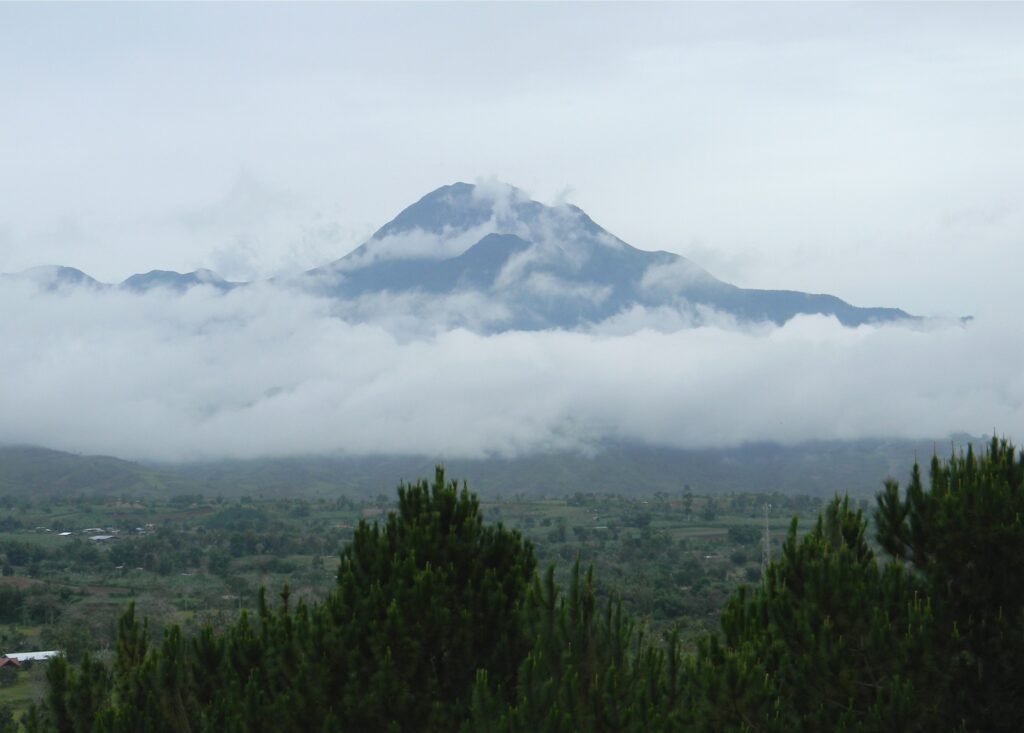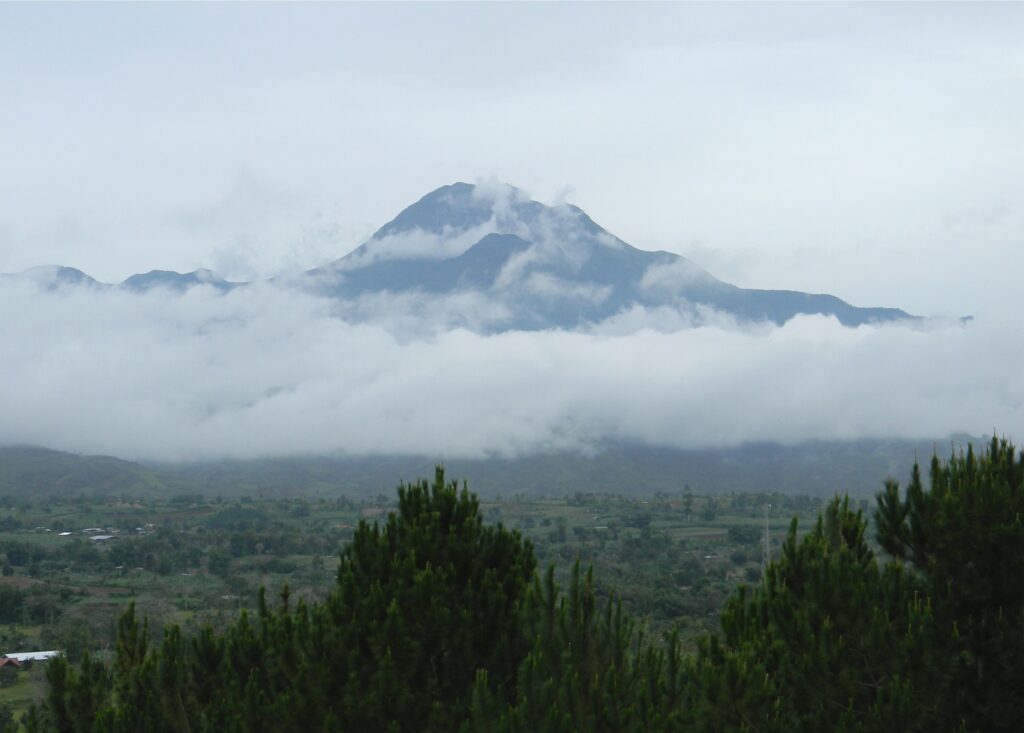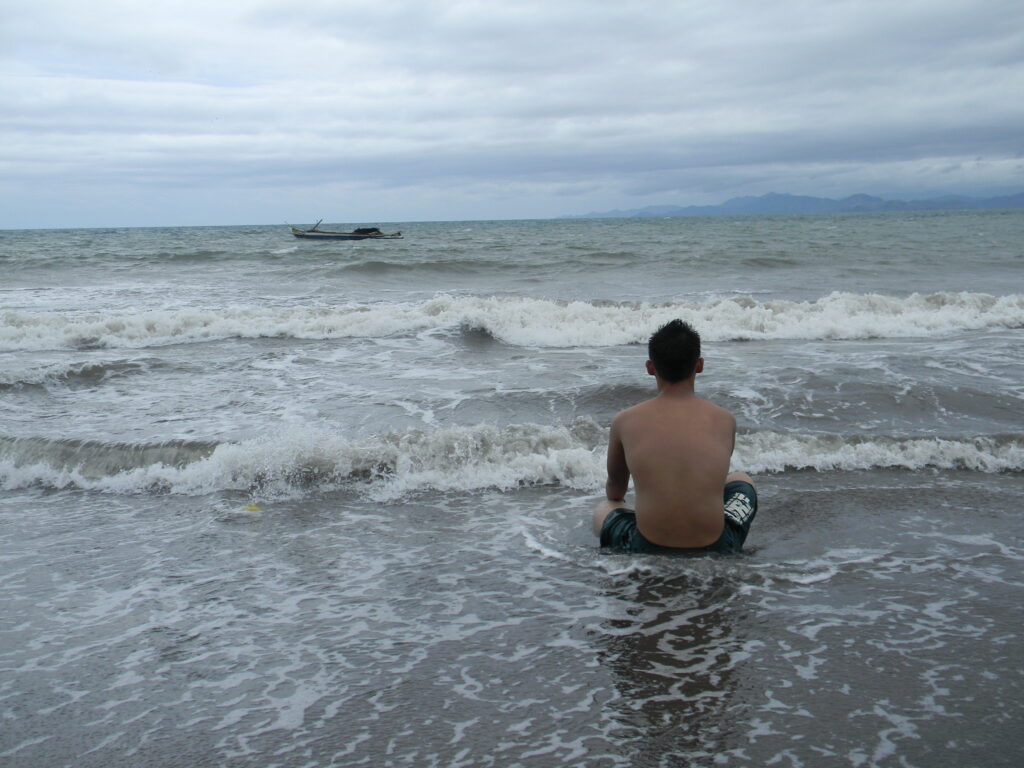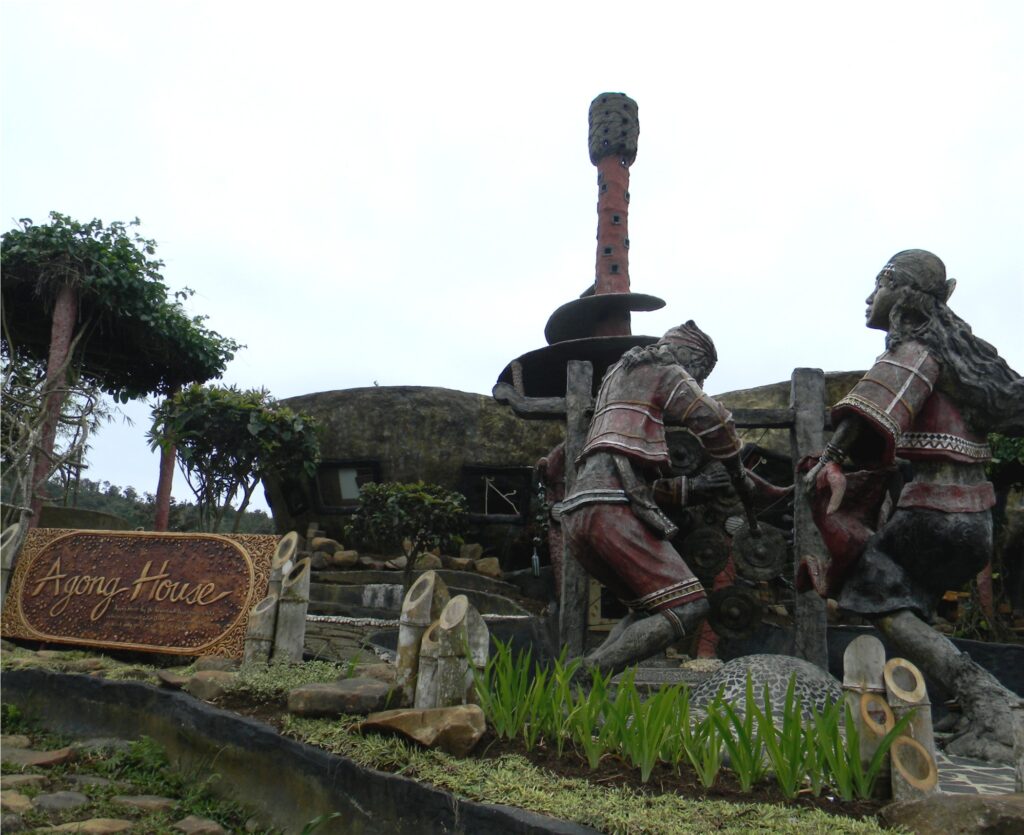DAVAO DEL SUR: PRIDE OF THE SOUTH
Text and Photos by Henrylito D. Tacio
Sprawled along the shores of Southeastern Mindanao, Davao del Sur is a place of natural wonders and rarities.
The province is home to a host of ethnic groups whose culture and way of life have been preserved.
Davao del Sur has 9 towns (Bansalan, Hagonoy, Kiblawan, Magsaysay, Malalag, Matan-ao, Padada, Santa Cruz, and Sulop) and one component city (Digos). Davao City used to be a part of the province until it was made an independent city.

There is a wide choice of white sand beaches and resorts all over the province. In some towns, there are hotels and inns. In Digos City, dining is good and varied; nightlife is fun.
Brief history:
Davao Del Sur was created under Republic Act. No. 4867 on May 8, 1967 and started as a province on July 1, 1967. The western part of the province is dominated by Mount Apo, the country’s highest peak. Mount Tanglao and Mount Latian are two other landmarks in the hinterlands. Wide fertile valleys are found between the mountain ranges and the narrow coastal plains in the east.
On May 8, 1967, Davao del Sur came into existence under Republic Act. No. 4867. However, it was not until on July 1, 1967 that it started as a province with Digos as its capital.

Fast facts:
Climate: The province is blessed with a favorable climate characterized by wet and dry seasons. The coldest time is during the months of December and January and hottest is during the months of April and May. The province is outside the typhoon belt.
Because of its favorable climate and fertile soil, Davao del Sur is primarily an agricultural province. It is popularly known as coconut country since coconut is its major commercial crop. Its rice and corn production is more than sufficient for its population. Other crops grown are bananas, cacao, ramie, coffee, fruits and vegetables.
Language/Dialects: Cebuano/Visayan, Tagalog, B’laan, Bagobo, Manobo, Tagakaolo, Muslim
Festivals: Every January 15, Digos celebrates the Saulogon Festival. April is the month of Pista sa Kinaiyahan in Santa Cruz. Kapatagan in Digos comes alive on June during their Dorong Festival. September has two festivals: Padigosan in Digos and Bansaulog in Bansalan. The provincial charter anniversary is celebrated every July 1.
Points of interest:
Mt. Apo National Park – This can be reached through four major trails, including the most recent one in Bansalan. It is the country’s highest peak, towering 10,311 feet above sea level. It boasts of cold and hot springs, giant wild flowers, crystal-clean water, waterfalls and moss-coated forests and considered as the international mecca for mountain climbing.
Tudaya Falls – Located at barangay Sibulan, it is 40 kilometers from the town proper of Santa Cruz. This beautiful, 300-foot high waterfall falls from a rocky cliff into a 50-meter diameter pool located just below the foot of Mt. Apo.
Mindanao Baptist Rural Life Center – The original place of the internationally-known Sloping Agricultural Land Technology (SALT). American agriculturist Harold R. Watson, recipient of the 1985 Ramon Magsaysay Award for peace and international understanding, conceptualized the technology and its modifications at barangay Kinuskusan in Bansalan.
Camp Sabros – Situated in sitio Baras in barangay Kapatagan of Digos City, the camp sits in an immense natural beauty of forest and wildlife. With an 820-meter line, the camp truly is a place of extreme adventure as it provides one of the longest zip lines in the country traversing along the top of pine trees with the majestic Mt. Apo looming on site.

Agong House — Also located in barangay sitio, near the Camp Sabros. There are several sculptures done by the famed Kublai Milan. The main feature, however, is the house that looks like an agong, an instrument widely used by local tribes.
Pasig Islet – Located in Bato, Santa Cruz, it is a man-made Islet that served as a base for coastguards before but was bought and developed by the provincial government to become a tourist attraction glazed with its white sand and clear waters.
Little Baguio – This barangay in Malalag has caves (Lalom Cave) and waterfalls (Kabasalan Falls, Kablolan Falls, and the stair-like Meyhan Falls) and offers a view of exotic flowers. The native B’laans still fervently practice their tribal customs, songs and dances.
The Colonsabak B’laan Village – This is located 15 kilometers from the poblacion of Matan-ao. Another B’laan cultural village is barangay Dongan-Pekong, some seven kilometers away from the town proper.
Itakura Hill – This is in Padada and there are 30 interconnected World War II Japanese foxholes around the hill.
Pandong Bato – Derived from the native words for “cover” and “stone,” it was said to have been used by Japanese soldiers as a protective wall during World War II. About 100-feet high, it is found in Kiblawan. A spacious, open plateau nearby was said to have been used as a Japanese airfield.
Mapunggis Rainforest Park – This is the site of Mapunggis Falls, a series of 25 cascades amidst narrow rock wall passages and a tropical forest. The 11th fall is ideal for rappelling. The park is a bumpy, 45-minute drive from the town proper of Magsaysay.

How to get there:
Regular buses ply the route from Davao City to General Santos. Buses depart from Manila to Davao City via Bicol, Samar, and Leyte daily. Buses from Cagayan de Oro are also available daily. Flights are also available from Manila and Cebu going to Davao City.
Ferries going to Davao City from Manila via Cebu and Zamboanga city are also available.
Buses ply to Digos-Davao, Digos-Cotabato and Digos-General Santos City-South Cotabato routes daily. Going to the various municipalities of the province is not difficult; there are buses and jeepneys traveling to different towns.

